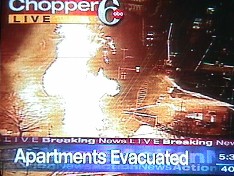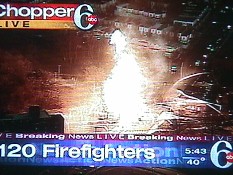|
From: Stephen Lauf
Great stuff, Brian. Mecca and WTC, what a comparison. You seem to be asking (and answering) "how does one design a site of pilgrimage well?" I agree that this is an apt question for design these days. Lucky for me, I suppose, my 'pilgrimage' to the post 9-11 WTC occurred the first weekend Lower Manhattan was reopened after the attack. A true once in a lifetime event. I haven't visited the Pentagon or Shanksville yet, however.
|
|
Your thoughts about the place of fiction in the reality of modern life is poignant. Late last night I watched the movie (based on the book) Remains of the Day, and it's story seems to relate to what you say. From amazon.com: "The novel's narrator, Stevens, is a perfect English butler who tries to give his narrow existence form and meaning through the self-effacing, almost mystical practice of his profession. In a career that spans the second World War, Stevens is oblivious of the real life that goes on around him--oblivious, for instance, of the fact that his aristocrat employer is a Nazi sympathizer. Still, there are even larger matters at stake in this heartbreaking, pitch-perfect novel--namely, Stevens' own ability to allow some bit of life-affirming love into his tightly repressed existence." What I saw in the film is that the aristocrat employer was just as oblivious as his butler, an oblivion, moreover, manifest by grandly organized pretense. In the movie, Christopher Reeves plays a U.S. Congressman from Pennsylvania. Before he visits the manor for a circa 1936 foreign affairs conference, the aristocrat and some of his compatriots wonder as to the source of the Congressman's family's wealth--"Perhaps they made their money from trolley cars." This is an obscure reference to the Philadelphia Wideners, for whom Lynnewood Hall by Horace Trumbauer was built. I spent the better part of yesterday afternoon (just across the street from the now derelict Lynnewood Hall, which was once just as grand as the Manor House in the movie) at Our Lady of Prouille, the quondam Elstowe, estate of the Elkins Family, now a retreat house run by the Dominican Sisters of St. Catherine de Ricci. I had the good fortune of speaking with Sister Caroline who is now in charge of the place. We even discussed Louis Kahn's unexecuted design for a Motherhouse which the Sisterhood had commissioned. Before going home, I went to the art library at Temple University's Tyler School of Art (which is right next to where I spoke with Sister Caroline, whose office is within what used to be the estate squash courts). Because I was looking up books about the art treasures that used to be within Lynnewood Hall (now the Widener Collection within the National Gallery, Washington DC), the librarian also brought out of the rare book room a most unexpected item--the 1946 auction catalogue of the estate of Eva Stotesbury. [Gosh, I love the reality of fabricating a novel/fiction.] '
|
|
Quondam © 2004.03.15 |


